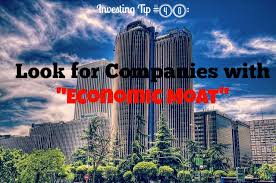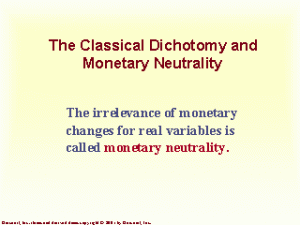What does the word ‘moat’ mean?
In medieval times, castles served as homes for kings and queens. ‘Moats’ are defenses in the form of a man-made ditch encircling the castle to protect it from any aggressors. The wider the moat, the smaller the chance of intrusion. The narrower the moat, the greater the possibility of a breach.
In his talks, Warren Buffett frequently mentions the word ‘moat’ and its importance in determining the value of companies.What is an economic moat and what is its role when it comes to investing? In the economic sense, the castle is the business and the moat is the competitive advantage the compay possesses. It is the edge the company has, to defend itself from the rival companies, and to maintain high profit levels. Now the question is, how do you determine if a company has a durable economic moat? Well, you need not look further as there is a list of indicators here.
- An indentifiable brand- This is the easiest way to spot a company with a strong economic moat. Think pf your favourite brands. Where do you get your coffee, your burgers, your clothes or even your dream car? If your answers are like McDonald’s, Ford, Mercedes Benz etc., then you’re right on the spot! As you can see, having an identifiable brand instantly creates the ring of protection for the business.
- Intangible assets- a company with a resilient moat has intangible assets such as patents, brand recognition, government licenses and others. Companies with strong brand recognition like PepsiCo., Nike and McDonald’s are able to charge a premium for their products which boosts their profits. Giant drug companies on the other hand, like Pfizer, hold patents on their drugs, that effectively bar all competition from marketing the same kind of drugs for the duration of the patent, giving the company guaranteed long-term profits and market share.
- Long-term profitability- Is the company able to withstand market competition and generate long-term profits? Will it still be there, distributing yearly dividends in the next 20 years? If the answer is yes, then it is a sign that the company has a wide moat as it foresees future challenges and maps out strategies on how to increase future income.
- High switching costs- This indicator is best described by changing computers. A long-time Microsoft user who plans to switch to Apple can get frustrated with the difference in the interface and might probably just drop the plan. In the stock market world, when a business is capable of establishing itself in the industry, suppliers and customers can face high switching costs if they choose to do business with a competitor.
- Huge capital requirement- This indicator is a high barrier to entry from high capital requirements. Businesses that require huge capital investments, have natural economic moats. They limit the chance of future competition. Telecommunication companies are the best examples.
- Low cost producer- Offering a similar product at an affordable price can be considered as a decisive advantage. This advantage is acquired by large companies which enjoy huge economies of scale. And this economy of scale cannot be easily replicated by any competitor because of its sheer size.
So, these are the asy ways to identify if a company has a durable economic moat. Use these indicators and invest wisely!
Click here for government certification in Accounting, Banking & Finance





3 Comments. Leave new
Content is too good1
Good work!!
Wow 😀 this is something new for me ;D
Hehe 😀 this is really good 😀
MOAT 😀
I main reason i read the blod was that the topic moat atracted me very well a bit funny but it attarcted me